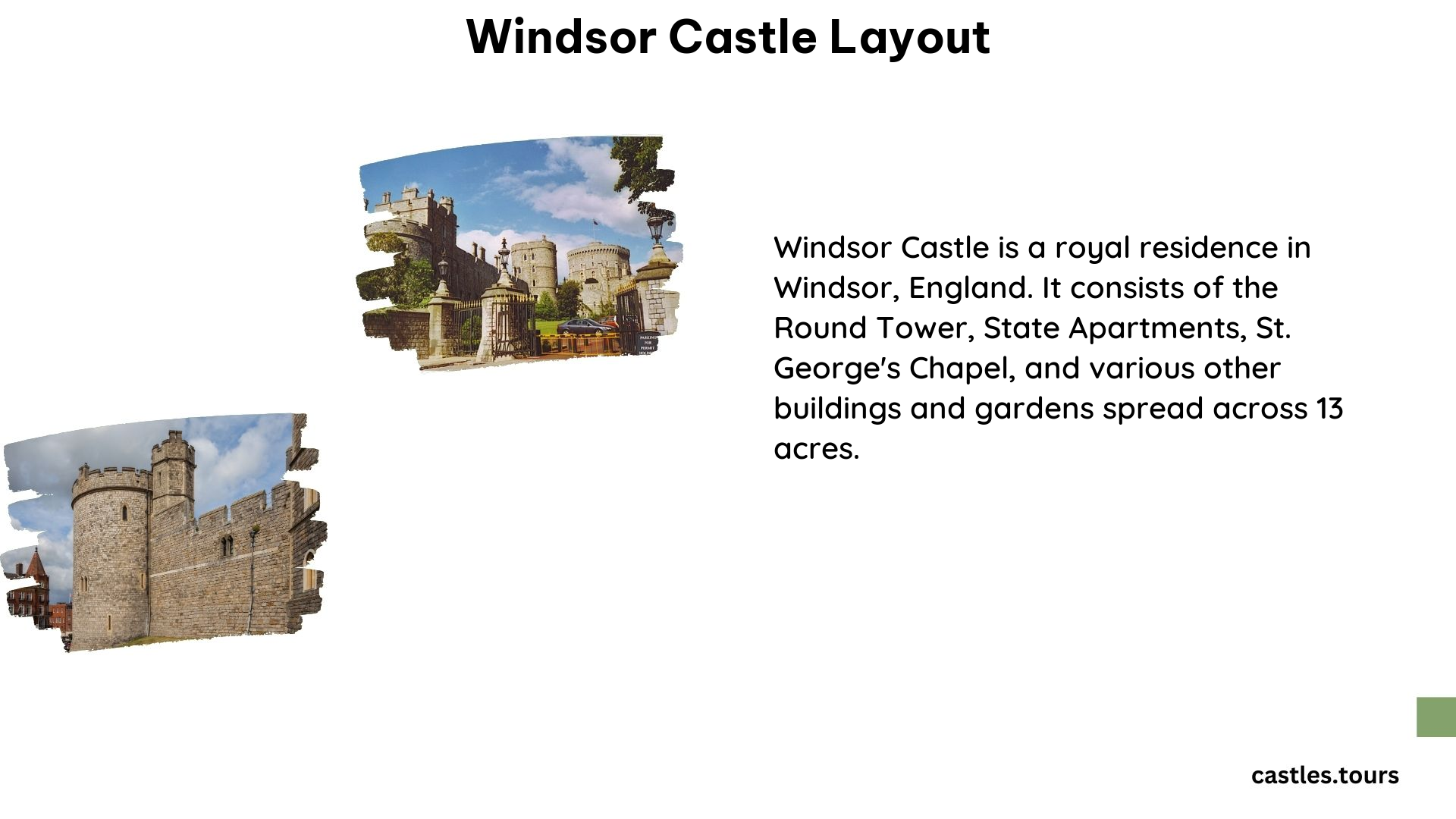Windsor Castle, located in Berkshire, England, is a royal residence with a rich history spanning over 1,000 years. The castle’s layout is a testament to its complex and evolving architectural history, with various phases of construction and renovation. In this blog post, we’ll delve into the key features of Windsor Castle’s layout, providing a comprehensive guide for castle touring enthusiasts.
Grounds and Size

Windsor Castle occupies a vast area of 13 acres (5.3 ha), making it the largest inhabited castle in the world. The castle is situated on a chalk inlier, or bluff, rising 100 ft (30 m) above the River Thames, providing a commanding view of the surrounding landscape.
Middle Ward and Home Park

The Middle Ward is one of the three main areas of the castle, situated between the Upper Ward and the Lower Ward. Adjacent to the castle is the Home Park, a large park used for royal hunting and recreation. The Home Park is also home to the famous Long Walk, a 2.64-mile (4.25 km) avenue leading to Snow Hill.
Upper Ward
The Upper Ward is a central quadrangle enclosed by the upper bailey wall, featuring major buildings such as the State Apartments, private royal apartments, and the King George IV Gate. The Upper Ward adjoins the North Terrace, overlooking the River Thames, and the East Terrace, overlooking the Home Park. The East Terrace has a private formal rose garden, first laid out by George IV in the 1820s and updated by Prince Philip, Duke of Edinburgh.
Lower Ward
The Lower Ward is the third main area of the castle, situated below the Middle Ward. It is not as well-documented as the Upper Ward but is believed to have been used for more functional purposes.
Round Tower
The Round Tower, also known as the keep, is a central feature of Windsor Castle. It was originally built by William the Conqueror and has undergone several reconstructions and renovations over the centuries. The Round Tower is situated on an artificial earthen mound (motte) and forms the west edge of the Upper Ward.
Other Features
In addition to the main areas, Windsor Castle boasts several other notable features, including:
- State Apartments: Used for official duties and ceremonies such as investitures or formal banquets.
- Private Royal Apartments: Used by the royal family for personal residence.
- King George IV Gate: A prominent entrance to the Upper Ward.
- Edward III Tower: Located in the south-west corner of the Upper Ward.
Timings and Access
Windsor Castle is open to the public, but the exact hours may vary depending on the time of year and official events. It is recommended to check the official website for the most up-to-date information. The changing of the guard takes place at 11 a.m. on certain days of the week.
Cost and Rates
Admission prices vary depending on the time of year and the type of ticket. It is recommended to check the official website for the most up-to-date pricing information.
Directory and Contact
- Address: Windsor Castle, Windsor, Berkshire, SL4 1NJ, United Kingdom
- Phone Number: 0303 123 7304
- Website: www.rct.uk
References
- Yale Center for British Art. (n.d.). Windsor Castle, Berkshire: Principal Floor Plan. Retrieved from https://collections.britishart.yale.edu/catalog/tms:6177
- Historic England. (n.d.). First floor plan of the middle and upper wards of Windsor Castle with a key showing phases of construction. Retrieved from https://historicengland.org.uk/images-books/photos/item/MD52/00138
- Wikipedia. (n.d.). Windsor Castle. Retrieved from https://en.wikipedia.org/wiki/Windsor_Castle
- Architectural Digest. (2024). Windsor Castle: Inside the 1,000-Year-Old History of the Royal Residence. Retrieved from https://www.architecturaldigest.com/story/windsor-castle-inside-the-1000-year-old-history
- Castellogy. (n.d.). Windsor Castle. Retrieved from https://castellogy.com/sites/sites-south-east/windsor-castle
